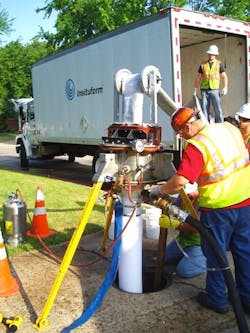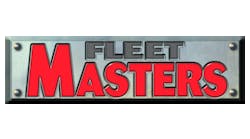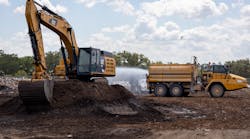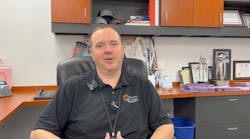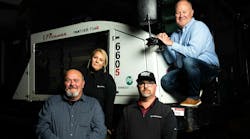Continuous improvement in fleet management can be called a work in progress, since striving to get better is never finished.
No one knows that better than Guy Gordon, CEM and director of asset management for Insituform Technologies, a pipeline protection and rehabilitation company.
Insituform is one of two 2011 Fleet Masters Award winners. The award has been presented since 2004 by Construction Equipment and the Association of Equipment Management Professionals (AEMP), and is judged on categories such as finance (financial management, acquisition, warranty and performance guarantees); information management (benchmarking, life cycle costing, specifications and technology); policies (safety, employee training, environmental and human resources); and controls (outsourcing, parts management, preventive maintenance and shop and facilities management).
Gordon joined Insituform’s tunneling group in October 2005 with the clear marching orders to turn things around. And he has done just that using benchmarks as one of the tools to measure the improvement of fleet operations management.
The first step in taking on the job of continuous improvement “begins with realizing what you’ve got,” Gordon says.
“To do that, you have to conduct a complete evaluation of your current operations. You look at its structure and its financial structure; you take an accurate inventory, including equipment; and once you find out what you have, you evaluate the personnel who are doing the tasks required to manage the equipment. Then you look at what the opportunities are and prioritize them.”
Depending on the current status of the operation, he says, some things will require immediate attention and other things can be addressed with more of an evolutionary approach. If, for instance, you have a disjointed organization or fragmented management that is not serving the needs of the fleet operation, then that, more than likely, demands immediate attention.
“On the other hand, if maintenance practices are adequate, but not optimal, that situation could be addressed with an evolutionary approach,” Gordon says. “High-priority tasks also might include cost areas, structure and efficiencies.” To bring those types of areas in line as quickly as possible requires that a corrective plan of action be put in place, Gordon says. That plan should zero in on areas you want to address, and it should spell out when you want to address them.
“You have to continually set goals and follow the plan,” Gordon says. “But that said, you have to be flexible because that plan of action and those goals will probably change throughout the process of the improvement.”
Asset managers must be willing to make those changes and work continually toward the established goals, he says.
“You can’t be side-tracked on other tangents that periodically come up unless they are part of the plan or of a critical nature. Sticking with the plan is where you are going to get your long-term results.”
When Gordon joined the company, he took a look at the technology being used and found Insituform already had telematics in place, so he “more or less refined its use where it was already in place and expanded telematics to some other areas.”
Although the company already was using an enterprise system software, it wasn’t using the equipment-management module, Gordon says. Implementing use of that module allowed Insituform to start tracking utilization costs.
When it comes to measuring the success of a moving target such as continuous improvement, “I measure success by results,” Gordon says. The results so far show Insituform’s preventive maintenance compliance has improved from 75 percent to more than 97 percent since January 2007. PM compliance performance is measured weekly, said Gordon.
“Compliance means how many units are within the PM schedules for all PM requirements,” he says. “So during any given week, 97 percent are in compliance. Of course, the 3 percent that are out of compliance are addressed immediately.”
The fleet department also experienced a 42-percent cost decrease in equipment operations for that same period, he says.
To arrive at the percentages Gordon says, “We benchmarked the number of crews we have against the production numbers. It comes down to equipment cost, number of crews (which is a proprietary number), and cost of production.”
Although the numbers speak for themselves, Gordon attributes general improvements made in the overall operation of the Insituform fleet to AEMP’s emphasis on core competencies. In his case, Gordon says, those core competencies were benchmarking, lifecycle costing, and financials.
For Gordon, continuous improvement may be a fluid situation, but following asset management’s core competencies is a solid, dependable track on which to run.
